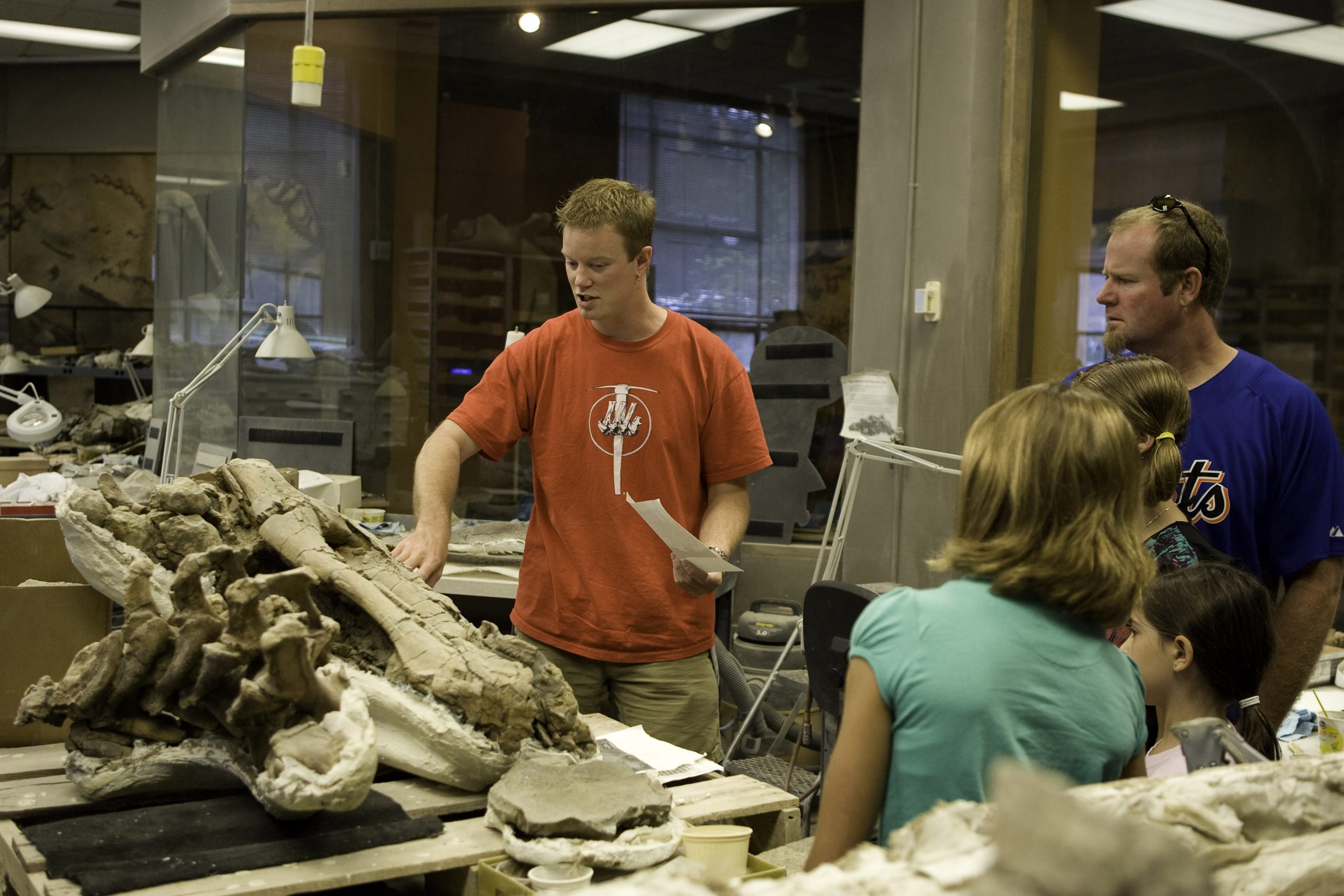
Nov. 10, 2014 – Experience the science and encounter the ancient artifacts and rare scientific collections behind the scenes at the Natural History Museum of Utah in a special event on Saturday and Sunday, Nov. 15-16, 2014.
Work areas and laboratories normally off limits to the public account for more than two-thirds of the 163,000 square feet of space at the museum’s 3-year-old new home at the Rio Tinto Center. This event offers visitors the chance to go behind closed doors and meet the scientists and curators studying and caring for the museum’s 1.5 million objects.
In the anthropology collections area, visitors will get up-close views of the exquisitely preserved, 1,000-year-old footwear, baskets, pots and tools made by the Ancestral Puebloan people who inhabited Glen Canyon. “Preservation was phenomenal,” says Chief Curator Duncan Metcalfe, Ph.D., an associate professor of anthropology at the University of Utah. “It’s like the makers left them yesterday.” University of Utah archaeologists were part of a team that raced to recover artifacts from Glen Canyon in the late 1950s before Lake Powell filled.
The biology labs and collections areas hold visually stunning butterflies and snakes, as well as scientifically priceless small mammals, native plants, reptiles and amphibians. Many were collected more than a century ago by naturalists who carefully documented the location and abundance of each species. These annotated collections now are enabling scientists to track how species ranges and populations are shifting with changing climate and land use patterns.
“If collections are deep enough in time, and extensive enough geographically, you can answer all sorts of questions,” says Eric Rickart, Ph.D., curator of vertebrate zoology.
Museum paleontologists have unearthed more than a dozen new species of dinosaur in southern Utah in recent years and only a fraction are on public display. The paleontologycollection area will offer visitors a chance to see some of the newest dinosaur discoveries and learn how museum scientists are probing fossilized bone tissues to better understand the growth patterns and habits of the extravagantly horned dinosaurs of the triceratops family.
Other Behind the Scenes opportunities include the following:
Fossil prep lab and exhibits shop: Find out how the museum paleontologists preserve and mount dinosaur skeletons and how museum preparators design and build exhibits.
Geology collection area: Meet museum mineralogists and view behind-the-scenes treasures from the rock and mineral collection.
Archaeology Range Creek Lab: Join archaeologists and graduate students who are making copies of ancient artifacts to test theories about how they were used and learn how to make and use pitch, the super glue of the Stone Age.
Event dates andtimes:
Saturday, Nov. 15,8:30 a.m. to 5 p.m.
Sunday, Nov. 16, 10 a.m. to 5 p.m.
Collection doors close at 4:30pm and the Fossil Prep Lab closes at 4:45pm
Museum address:
301 Wakara Way
Salt Lake City, Utah 84108
